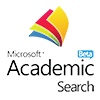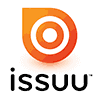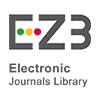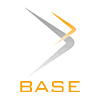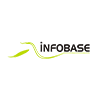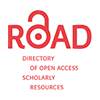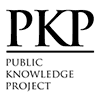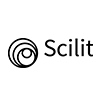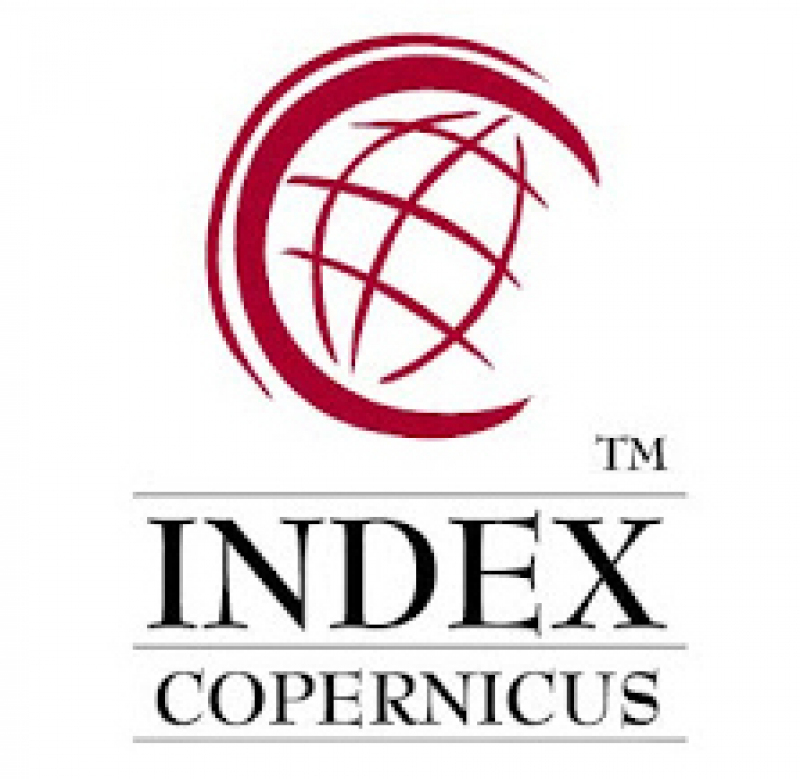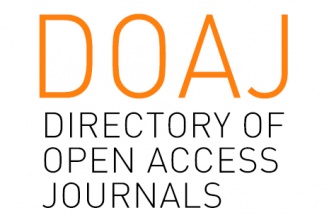RFID-Based Library Service Automation as Online and Self-Service Support
Abstract
This study explores the development and implementation of an RFID-based library automation system at Universitas Negeri Semarang (UNNES) in response to the increasing need for efficient, technology-driven academic library services. As the central hub for intellectual and research activities, academic libraries are undergoing significant transformation due to the integration of Information and Communication Technology (ICT). Utilizing a qualitative descriptive approach and system development methodology, the research identifies core user needs, system challenges, and solutions for enhancing service delivery. The proposed system, developed using the Waterfall model with PHP and MySQL, includes digital catalog access, online borrowing and returning, reservation management, and administrative functions. Radio Frequency Identification (RFID) is employed to automate circulation services, reduce manual workload, and improve user experience through self-service stations and real-time tracking. The system also incorporates autonomous features and security enhancements to streamline operations. Findings indicate that RFID-based systems significantly enhance library efficiency, user autonomy, and resource management. However, challenges such as implementation costs and digital literacy gaps remain. The study concludes that RFID technology holds transformative potential for modern academic libraries and offers a replicable model for other institutions seeking to adopt similar innovations.
Keywords
Full Text:
PDFReferences
I. Yenianti, “ANALISIS PEMIKIRAN SULISTYO BASUKI DAN WIJI SUWARNO TENTANG FUNGSI PERPUSTAKAAN DALAM MASYARAKAT,” 2021. [Online]. Available: https://api.semanticscholar.org/CorpusID:240506567
W. Hardyanto, A. Purwinarko, and M. A. Adhi, “End-user satisfaction analysis on library management system unnes using technology acceptance model towards national standard of integrated library,” in Journal of Physics: Conference Series, 2018. doi: https://doi.org/10.1088/1742-6596/983/1/012006.
D. Atuase and J. Maluleka, “Marketing of library resources and its impact on the library usage of distance-learning students,” Digit Libr Perspect, vol. 39, no. 1, 2023, doi: https://doi.org/10.1108/DLP-03-2022-0025.
A. E. Cook, A. S. Gann, D. A. Ray, and X. Zhang, “Advantages, challenges, and success factors in implementing information technology infrastructure library,” Issues in Information Systems, vol. 22, no. 2, 2021, doi: https://doi.org/10.48009/2_iis_2021_196-208.
S. Nepali and R. Tamang, “A Review on Emerging Trends and Technologies in Library,” American Journal of Information Science and Technology, vol. 6, no. 1, 2022, doi: https://doi.org/10.11648/j.ajist.20220601.12.
I. Irwandani, “MODEL PEMBELAJARAN JUST IN TIME TEACHING (JITT) BERBANTUAN WEBSITE PADA TOPIK LISTRIK ARUS BOLAK-BALIK UNTUK MENINGKATKAN KETERAMPILAN BERPIKIR KREATIF SISWA SMA,” Jurnal Ilmiah Pendidikan Fisika Al-Biruni, vol. 3, no. 2, 2014, doi: https://doi.org/10.24042/jpifalbiruni.v3i2.72.
H. Hartono, “Representasi Demokrasi Informasi Sebagai Strategi Pengembangan Perpustakaan Dalam Ekosistem Digital Studi Teoritis Pendekatan Dalam Membangun Open Access Pada Perpustakaan Perguruan Tinggi Di Malang,” UNILIB : Jurnal Perpustakaan, vol. 13, no. 1, Feb. 2022, doi: https://doi.org/10.20885/unilib.vol13.iss1.art4.
N. Soltani-Nejad, F. Taheri-Azad, N. Zarei-Maram, and M. K. Saberi, “Developing a model to identify the antecedents and consequences of user satisfaction with digital libraries,” Aslib Journal of Information Management, vol. 72, no. 6, 2020, doi: https://doi.org/10.1108/AJIM-04-2020-0099.
S. E. Ibrahim and M. A. Rusly, “QR-CODES DI PERPUSTAKAAN: INISIATIF PERPUSTAKAAN DIGITAL OPEN UNIVERSITY MALAYSIA (OUM),” Seminar Kebangsaan Pustakawan Malaysia, 2013.
R. Nuraini, “Optimalisasi Layanan Perpustakaan Fakultas Biologi Universitas Gadjah Mada melalui Kolaborasi Pustakawan dengan Volunteer Perpustakaan,” Media Informasi, vol. 31, no. 1, pp. 94–102, Jul. 2022, doi: https://doi.org/10.22146/mi.v31i1.4969.
S. Siska and Y. M. Roza, “Analisis Kualitas Layanan Perpustakaan Menggunakan Metode LibQual+TM di Perpustakaan Umum Daerah Kabupaten Sijunjung,” JIPIS : Jurnal Ilmu Perpustakaan dan Informasi Islam, vol. 1, no. 2, p. 12, Nov. 2022, doi: https://doi.org/10.31958/jipis.v1i2.6669.
A. R. Mashud and R. O. Dewi, “Persepsi Pemustaka Terhadap Sikap Pustakawan pada Layanan Perpustakaan di Dinas Perpustakaan dan Kearsipan Provinsi Kalimantan Selatan,” ABDI PUSTAKA: Jurnal Perpustakaan dan Kearsipan, vol. 2, no. 2, pp. 58–63, Jul. 2022, doi: https://doi.org/10.24821/jap.v2i2.6960.
H. Herman, E. Amrina, and M. A. Bora, “PENERAPAN QUALITY FUNCTION DEPLOYMENT DALAM PENINGKATAN KUALITAS LAYANAN PERPUSTAKAAN PERGURUAN TINGGI,” SIGMA TEKNIKA, vol. 5, no. 1, pp. 001–011, Jun. 2022, doi: https://doi.org/10.33373/sigmateknika.v5i1.4090.
A. Rahmadanita, “Kompetensi Digital Pustakawan dalam Penyelenggaraan Fungsi Layanan Perpustakaan pada Masa New Normal,” Media Informasi, vol. 31, no. 2, pp. 223–236, Dec. 2022, doi: https://doi.org/10.22146/mi.v31i2.6290.
T. I. Fajri, “PERANCANGAN SISTEM INFORMASI PERPUSTAKAAN DIGITAL GAMPONG PANGGOI BERBASIS WEB,” DEVICE : JOURNAL OF INFORMATION SYSTEM, COMPUTER SCIENCE AND INFORMATION TECHNOLOGY, vol. 3, no. 2, pp. 37–43, Dec. 2022, doi: https://doi.org/10.46576/device.v3i2.2701.
S. Wahyuntini, “E-Katalog Pameran Seni: Magnet Pemustaka dalam Mengakses Layanan Perpustakaan Perguruan Tinggi Seni,” ABDI PUSTAKA: Jurnal Perpustakaan dan Kearsipan, vol. 2, no. 2, pp. 64–70, Jul. 2022, doi: https://doi.org/10.24821/jap.v2i2.6985.
A. P. Narendra, “Analisis Penerimaan Pengguna terhadap Penerapan Teknologi Informasi pada layanan Perpustakaan Digital Menggunakan Technology Acceptance Model (TAM) di Perpustakaan UNIKA Widya Karya Malang,” Tik Ilmeu : Jurnal Ilmu Perpustakaan dan Informasi, vol. 6, no. 2, p. 169, Dec. 2022, doi: https://doi.org/10.29240/tik.v6i2.4438.
Widodo, “PELAYANAN PERPUSTAKAAN BERBASIS TEKNOLOGI INFORMASI (TI),” Buletin Perpustakaan, vol. 1, no. 1, pp. 83–97, Jun. 2018.
A. Ibrahim and M. Afrina, “Pengembangan Model Perpustakaan Berbasis Teknologi Informasi untuk Meningkatkan Kinerja Layanan Perpustakaan dan mewujudkan perpustakaan ideal berbasis digital di Fasilkom Unsri ,” Konferensi Nasional Teknologi Informasi dan Aplikasinya (KNTIA) 2011. KNITIA 2011, Sumatera Selatan, pp. c87–c93, Oct. 22, 2011.
T. Kurniawan, I. Inawati, A. N. Dewi, and A. Prasetyawan, “PENDAMPINGAN PUSTAKAWAN SEKOLAH LAB UM DALAM IMPLEMENTASI SISTEM OTOMASI PERPUSTAKAAN BERBASIS OPENSOURCE,” BIBLIOTIKA : Jurnal Kajian Perpustakaan dan Informasi, vol. 5, no. 1, p. 64, Jun. 2021, doi: https://doi.org/10.17977/um008v5i12021p64-73.
Marwan, Yusuf., Adigun, Akintunde., Habeeb, Shaik, Mohideen., Adeyinka, Quadri. (4) Radio Frequency Identification (RFID) Based Library Management System. International journal of technology and systems, (2023). doi: 10.47604/ijts.2041
Dr, A, R, JayaSudha., Krishnakumar, M.A.. (2) Library book detector using rfid. International advanced research journal in science, engineering and technology, (2024). doi: 10.17148/iarjset.2024.11611
Vadlakonda, Sai, Vedanth., Mandaloju, Sai, Rohan., Sheelam, Vineeth, Sai., Dr., T., Ramaswamy., Y., Sreenivasulu. (5) RFID Based Automated Library Management System. International Journal For Science Technology And Engineering, (2023). doi: 10.22214/ijraset.2023.48607
Khusaini NS. Effectiveness of RFID Smart Library Management System. Journal of mechanical engineering. 2023 Nov 15;
Usman, Arfan. (1) Implementation of Smart Library Using Radio Frequency Identification (RFID) Technology in Libraries. Riwayat, (2024). doi: 10.24815/jr.v7i2.38541
DOI: http://dx.doi.org/10.18415/ijmmu.v12i8.6890
Refbacks
- There are currently no refbacks.
Copyright (c) 2025 International Journal of Multicultural and Multireligious Understanding

This work is licensed under a Creative Commons Attribution-NonCommercial-NoDerivatives 4.0 International License.
https://ijmmu.com
editor@ijmmu.com
facebook.com/ijmmu
Copyright © 2014-2018 IJMMU. All rights reserved.









